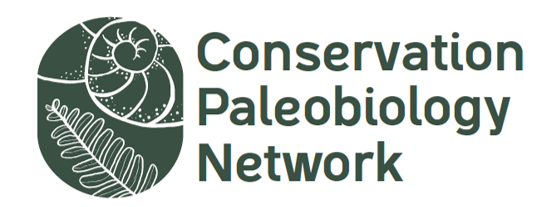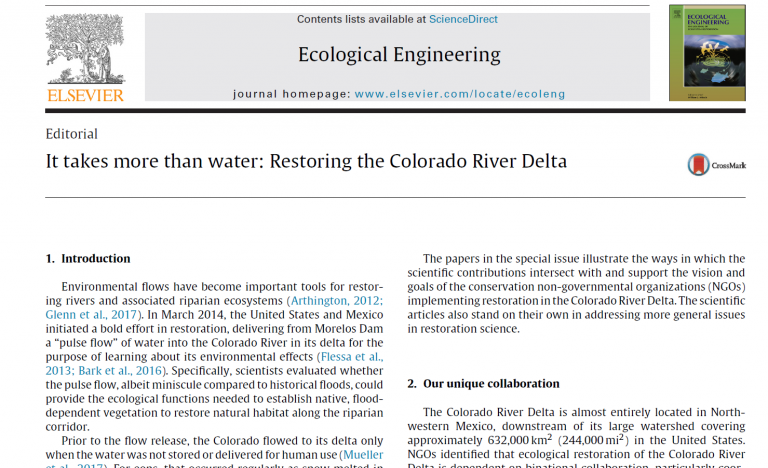Webinars for Conservation Paleobiology
• CPN Webinar 1
The Colorado River: Water for the Southwest and and Intro to Conservation Paleobiology
by Karl Flessa
In this webinar Dr. Karl Flessa (University of Arizona) talks about conservation paleobiology, the Colorado River delta, and water issues in the southwest U.S. and northwest Mexico.
Instructors:
The webinar video does not require knowledge gained from the worksheet. It can stand alone. But, if time is available and for best results, have the students do the learning exercises before the video.
For best results, use the worksheet or scroll down to Visit (Part 1), Calculate (Part 2), Listen (Part 3), and Read (Part 4) as instructed below. After completing these steps, watch the webinar.
Part 1. Visit
Do some virtual field work on the Colorado River Delta by viewing the prezi link here.
Part 2. Calculate
Estimating Population Density
Background
In this exercise, you will use a quantitative method to estimate the ecological responses of species to changes in their environment. Skeletal accumulations are one of the raw materials used in conservation paleobiology and you will be using the bivalve shell accumulations in the Colorado River Delta. You will estimate the population density of the shells accumulated before upstream water diversions and compare the value with the population density today. This is a measure of the human impact on the delta’s productivity.
Learning Objectives & Outcomes
•Estimate population density using bivalve shell accumulations
•Compare the population density of before and after the water diversions
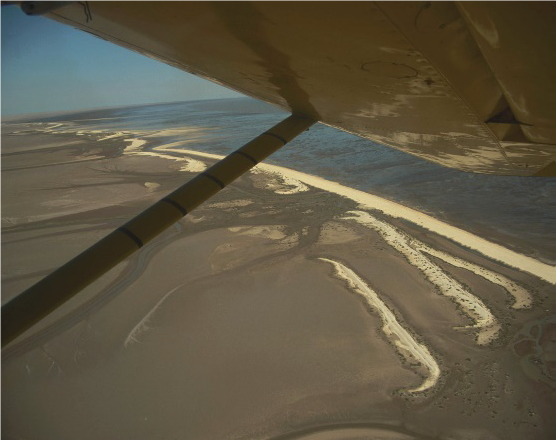
Instructions Part I. Calculating total number of bivalves
Using satellite imagery, aerial photos (image left) and boreholes of the Colorado River Delta in the Gulf of California, the volume of beach ridges where shells are accumulated was determined as 2.4 x 107 m3. The density of shells was determined as 17.4 x 104/m3 by counting shells that are larger than 12.5 mm in several buckets of shells in the field. Each bivalve has two shells therefore density of bivalves is 8.7 x 104 m3.
Question 1. Using the above information, calculate the density of bivalves in the study area. [Note: Each bivalve has two shells.]
Question 2. What is the total number of bivalves in the shelly deposit?
The growth lines in average-sized shells (image below) indicate an average age of three years.
Question 3. Using the above information and estimates from Part I, estimate the number of bivalve generations in the shelly deposit.
Question 4. What is the number of individuals alive at any one time (the “standing population size”)?
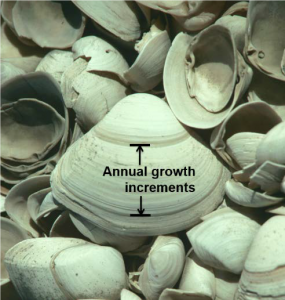
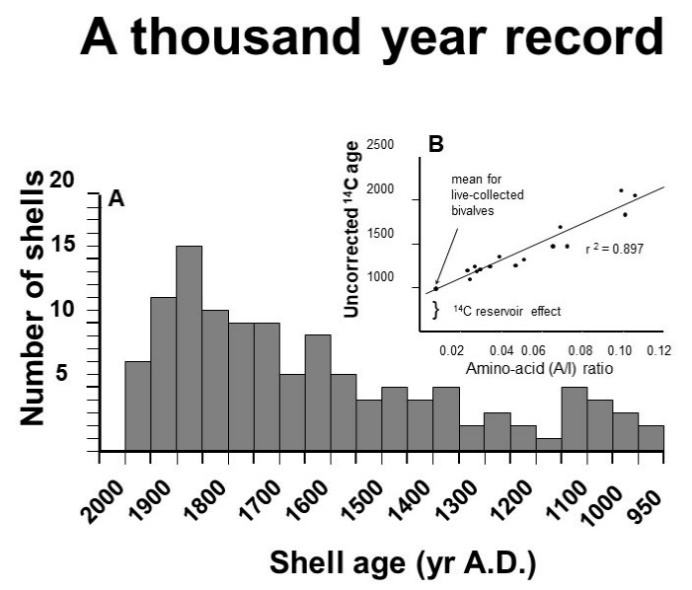
Today, these bivalves live in the intertidal and shallow subtidal zones. Using satellite imagery (image right) and aerial photos of the Colorado River Delta in the Gulf of California, the calculated area of intertidal zone is 1.2 x 108 m2.
Make one estimate using 1.2 x 108 m2 as an estimate of habitable area
Assuming the same area of the shallow subtidal zone, now use 2.4 x 108 m2 as an estimate pf the total area once inhabited by these bivalves.
Question 5. Using the above information and values from Part II, estimate the population density of bivalves in the time before upstream water diversions.
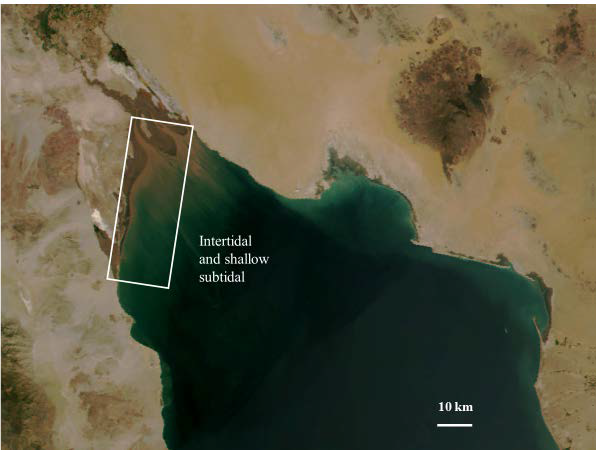
The average population density of bivalves in the study area today is 2.3 – 3.8 bivalves per square meter (ind/m2) for shells that are larger than 12.5 mm in size.
Question 6. Using the above information and the estimates from question 5, estimate the maximum and minimum changes in the population density since the upstream water diversions.
Citation: Kowalewski, M., Avila Serrano, G.E., Flessa, K.W. and Goodfriend, G.A., 2000. Dead delta’s formerproductivity: Two trillion shells at the mouth of the Colorado River. Geology, 28: 1059-1062. https://doi.org/10.1130/0091-7613(2000)28<1059:DDFPTT>2.0.CO;2
Part 3. Listen
Watch this video to listen to an indigenous voice from the Colorado River Delta.
(Or copy/paste the following link into your browser:
https://www.youtube.com/watch?v=U39L2iTKGSE&feature=youtu.be)
Part 4. Read
Read the following article by clicking on the article image below.
Note: the article was published before approval of Minute 323 to the U.S. Mexico Water Treaty. Minute 323 continues environmental flows until 2026.
- We have a license to use this material. Reprinted from Ecological Engineering, Volume 106, Part B, Jennifer Pitt, Eloise Kendy, Karen Schlatter, Osvel Hinojosa-Huerta, Karl Flessa, Patrick B. Shafroth, Jorge Ramírez-Hernández, Pamela Nagler, Edward P. Glenn, It takes more than water: Restoring the Colorado River Delta Pages 629-632, Copyright (2017), with permission from Elsevier.
- Link to the article on the publisher’s website here.

